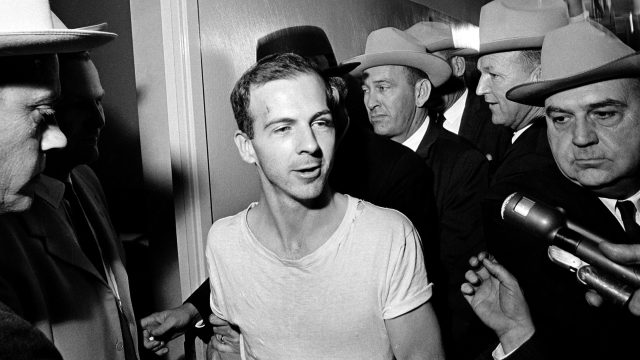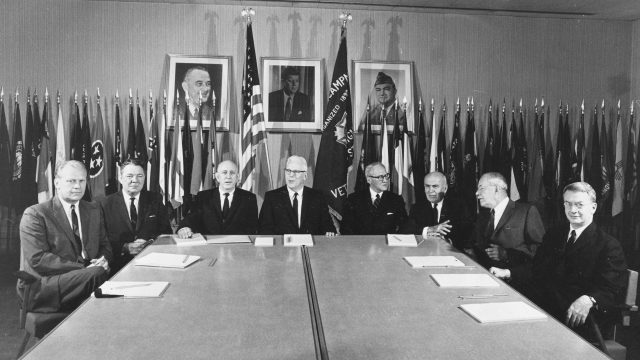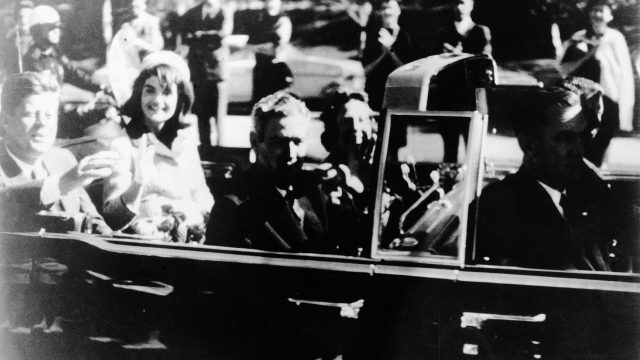Conspiracy theorists are eagerly awaiting the release of the final cache of official secret papers about the assassination of John F Kennedy.
The US National Archives records, expected to be unveiled on Thursday, are unlikely to contain any major revelations but will be analysed carefully by those who do not accept the existing narrative around the death of the youngest man appointed to the office of President of the United States.
President Kennedy was with his wife Jacqueline in Texas. They were travelling through Dealey Plaza in Dallas on November 22 1963, in a black open-top limousine, waving at crowds. Also in the car was Texas governor John Connally and his wife Nellie. The vice president Lyndon B Johnson and his wife were in a second car.

JFK had been in the city ahead of the start of his re-election campaign.
At 12.30pm, three shots rang out. Two bullets hit Kennedy in the head and neck. His death was announced on the same day at 1.33pm.
Investigators found the shots came from the Texas School Book Depository.
Within hours Lee Harvey Oswald, 24, was charged with killing the president and police officer JD Tippit. He never had the chance to give his version of events as he was shot and killed by nightclub owner Jack Ruby while in police custody on November 24.
An official inquiry, the Warren Commission set up by President Johnson, determined that Oswald acted alone. It also found that Ruby was not part of a bigger plot or cover-up.

Another later inquiry, by the House Select Committee on Assassinations, found that Kennedy “was probably assassinated as a result of a conspiracy” and that there was a “high probability that two gunmen fired”.
This fuelled myriad theories about who was ultimately behind the president’s death.
Kennedy was born on May 29 1917 in Brookline, Massachusetts. He went on to study at Harvard and after graduating in 1940 he joined the navy. He was seriously injured on August 2 1943 when his boat was sunk by a Japanese destroyer but managed to lead his fellow survivors to safety.
He was elected to Congress in 1946 and represented part of the Boston area. He served three terms before he was elected to the Senate in 1952, eventually running for president in 1960.
Kennedy, who was 43 when he entered the White House, came from a large Irish Catholic family. He married Jacqueline Bouvier in September 1953, when he was 36 and his wife 24. They went on to have two children.

Together they were seen to add a dash of vitality and glamour to the White House, which helped America fall in love with the couple. He was seen as a handsome, charismatic leader with a stylish, fashionable wife.
Kennedy’s truncated presidency is remembered for his handling of the ongoing nuclear threat, civil rights and the space race.
Throughout JFK’s election campaign and his time in the White House, he faced the threat of nuclear war between the US and the Soviet Union, which culminated in the Cuban Missile Crisis. Cuba wanted Soviet nuclear missiles on the island to deter future invasions.
It was seen by many as a masterclass in negotiations on Kennedy’s part when Soviet leader Nikita Khrushchev agreed to retreat.
But did those tensions trigger a plot which culminated in his assassination? Shooter Oswald had links with the CIA and is known to have visited the Cuban and Soviet embassies in Mexico.
Cuban exiles, the CIA and even President Johnson have all been named in conspiracies.

Congress ruled in 1992 that all assassination documents be released within 25 years and some have already been published.
The final tranche is expected to include more than 3,000 documents that have never been seen by the public and more than 30,000 that have been previously released but with redactions.
It is thought that the files will contain more details of Oswald’s trip to Mexico.
Judge John Tunheim, who chaired the Assassination Records Review Board in the 1990s, said the new documents were “not believed relevant” to the assassination.
But that is unlikely to deter historians from poring over them.






